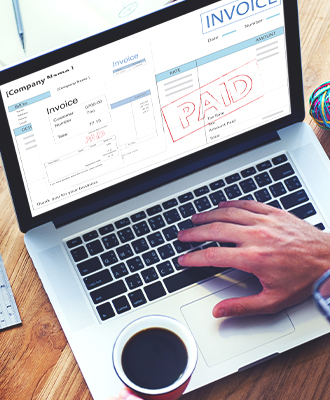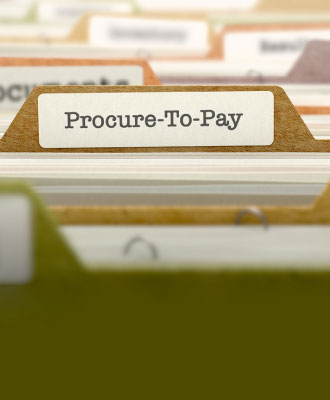How To Manage Accounts Payable Effectively
In the current economic climate, businesses have to do more with less, regardless of industry. Organizations can’t afford to miss opportunities to increase working capital. To be successful, you have to develop a strategy that gives you more flexibility with the cash-strapped on your balance sheet. Doing so helps to develop the additional liquidity you need to streamline processes, reduce costs, fund growth, enhance service, and capture new investment opportunities. That all begins with effective accounts payable management.
What is Accounts Payable Management?
accounts payable management refers to the procedures, policies, and practices a company uses to manage trade credit purchases. These tasks include:
- Seeking trade credit lines
- Managing the timing and flow of purchases
- Acquiring favorable purchase terms
All of if this is done to control a company’s working capital. Accounts payable should be included in the short-term liabilities section of the balance sheet. It is mostly comprised of the short-term financing of things such as inventory purchases, accrued expenses, and other valuable short-term operations.
Delaying Payment
When it comes to performing accounts payable, there’s definitely a right way and a wrong way. Because it is a back-office management system, it is rarely front and center. This is especially the case when a business is looking to grow because it often gets put on the back burner in favor of competing priorities. However, if you want to optimize your working capital, one of your priorities needs to be developing a payables strategy.
In response to the need for optimization, many companies off to delay payments. They will extend their payables for as long as possible to maximize their free cash flow. Generally speaking, this approach is not the way to handle it. Delaying payment can destroy supplier morale and goodwill which results in slower deliveries, less willingness to fix issues, delayed responses to queries, and more strict payment terms.
On the other hand, paying early can provide a company with Stancil benefits such as early payment discounts and rebates. It comes down to doing good business. Bloating another company’s money will never look good.
Benefits
Organizational change is crucial to fostering a working capital culture. For a small business, it can produce significant benefits. Refining your payables process improves cash flow prediction accuracy which enables the payable department to set better budgeting. Ultimately, this positions a company to improve liquidity and helps to mitigate gaps in funding while making higher profits.
Effective accounts payable management can provide numerous insights to help strengthen your negotiating power and help you partner with better suppliers. Utilizing a company’s cash the correct way means extended payment terms, special holds on inventory, and increased warranty periods.
“Automation not only eliminates time-consuming tasks, but it also makes it easier to pay invoices and track vendor payments, thus giving you greater control over cash flow.”
Risks
Failing to adopt an effective AP process hampers your company’s ability to process invoices in a timely manner, take advantage of discounts that are available, and set longer or shorter payment terms with suppliers as needed, depending on which are the most favorable.
Avoid these mistakes:
- Relying heavily on manual processes as these are heavily error-prone. This is especially the case when it comes to approving requisitions
- Failing to confirm that deliveries match contractual terms
- Overextending your pay cycle, causing loss of access to early payment discounts
- Failing to issue purchase orders for each order
- Neglecting to take advantage of savings through volume rebates or trade spend initiatives
- Accepting discounts before calculating the cost of capital outlay
- Data entry errors for supplier or contract data in master files
- Failure to develop systems or processes that prevent inaccurate, duplicate, late, or missed payments
The goal is to make as few mistakes as possible. If you don’t have the labor available, many accounting software options can help keep an eye on everything.
Strategic Accounts Payable Management
Businesses have to take a more strategic approach to accounts payable management. The accounts payable team, along with the procurement department needs to collaborate with senior management to establish a working capital culture across the company.
A great deal of this comes down to invoice processing. Are invoices being received and processed in a timely manner? Organizations need to adopt a management strategy that prioritizes the importance of freeing up working capital through the optimization of payables. While many businesses may choose to adopt a custom approach, some strategies work across the board.
Implementing Strong Governance Practices
This will not only strengthen your internal controls but also reduce manual error around the entire accounts payable process and contract review.
Centralized Accounts Payable
By using a shared service environment for processing and reporting, all employees will adhere to common standards and practices. It also makes it easier to measure everyone’s performance against established metrics so that a company can accomplish more tasks in a shorter amount of time using fewer resources. This approach is ultimately what reduces costs.
Going Paperless
Consider automating your payables management with electronic data interchange. Though it’s not a solution for everyone, a company that considers electronic communication with vendors streamlines their approval process and creates more timely payments. This enables you to take advantage of available discounts and rebates for being early or paying on time.
Using an electronic system ensures your business can handle a variety of tasks and save a lot of time in the process, including:
- Requisition approval
- Automatically generating purchase orders
- Validating and accepting invoices
- Tracking goods receipt
- Paying invoices on the correct due dates
Depending on the degree of automation, it may even be possible to scan invoices electronically, track delivery receipts, and resolve disputes.
Adopting Supplier Portals
A supplier porter portal should be set up to allow suppliers to track what your business is doing. This can include activities such as:
- Order status
- Potential product shortages
- Payments received
- Scheduled deliveries
Implementing a supplier portal reduces manual errors while creating convenience for your vendors. It also helps to improve order accuracy.
Management Workflows
Creating a management workflow helps to quickly identify problems and enhances accounts payable process efficiency. It helps resolve process bottlenecks and streamlines everything to improve liquidity management effectively.
When it comes to purchasing approval, it’s imperative that you always define the level of authority required for various purchases. This can differ based on price or quantity.
Process Optimization
Within the AP department, there are six core functions that need to optimize. When properly optimized, these should strengthen your working capital considerably.
Vendor Selection Process
Setup a preferred supplier list to prevent maverick buying. This approach also positions your organization to negotiate the most favorable terms to optimize your working capital. You’ll:
- Establish priorities for the vendor negotiations process, ensure key decision-makers are involved, including the chief financial officer (CFO) and chief procurement officer (CPO).
- Regularly seek the chance to negotiate better pricing and payment terms, including reduced late fees.
- Develop supplier performance scorecards for your most strategic suppliers to leverage them during negotiations to get better quality in terms of products and services, better pricing, or improved customer service.
Supplier Master Data Setup Process
After you’ve negotiated terms with vendors, you must capture and maintain the data. Inaccurate data entry can cause more than payment errors. It can lead to account delinquencies, which stop you from being able to get available discounts, and may even lead to supply disruptions. To avoid these issues:
- Keep all your service level agreements (SLAs) accurately reflected in your accounting system. Your supplier master data needs to detail the product/service details, delivery timelines, applicable regulatory compliance mandates, supplier responsibilities, quality standards, etc.
- Update payment terms and volume discount availability on a regular basis, along with any other periodic rebates. If contract terms change, make sure the master data is amended accordingly.
- Store your contract properly with a document management system.
Contractual Review Process
To prevent inaccurate or fraudulent vendor billing practices, which may cause overpayments or duplicate payments, take time to regularly review your vendor contracts. Do this by:
- Assigning responsibility for data to a central master data team who can check for completeness, accuracy, and compliance with standard terms. The team also needs to review vendor performance to ensure they remain in compliance with their contract terms.
- Including supplier contract clauses that pass accountability for fines and penalties to vendors if they are found to be underperforming in some aspect.
- Completely timely and period supplier contract reviews, reviewing the contracts against industry-standard terms.
- Discussing vendor authorization limits with your legal team, along with the appropriateness of contract terms and confirmation of regulatory compliance
Procurement Process
As a small business owner, you could work with a handful of suppliers, or you may work with hundreds or even thousands of them. Even if you’ve streamlined your environment, you may still struggle to track all vendor invoices and reconcile them to the appropriate goods received and purchase orders. Failure to accurately manage your payables makes it more difficult to forecast and manage your cash flow and anticipate your short-term liquidity needs.
Consider these strategies:
- Issue a purchase order for each new order, so you can validate orders received, lock payment terms in advance, track invoices against existing POs to make sure suppliers are billing in accordance with contract terms
- Explore the viability of available discounts. If you don’t have the cash on hand, or the capital outlay exceeds the benefit, it may not make sense to pay early.
- Track payables outstanding by the vendor and by payment terms.
- When purchasing a riskier or new product, negotiate longer payment terms so you can increase your working capital. Alternatively, ask to add the product to consignment stock, rather than inventory so you can maximize liquidity and reduce risk.
- Clearly set AP metrics, such as the frequency of invoices that match purchase orders, the percentage of invoices paid to terms, etc., and adhere to them throughout the organization.
Invoicing Process
Proper management of the invoicing process is crucial to improving liquidity. Consider:
- Refusing to pay inaccurate invoices – any errors should cause the invoice to be sent back to the supplier.
- Avoiding early payment of invoices, without risking key supplier relationships
- Developing the appropriate channels and processes to handle exceptions and reporting
- Implementing an EDI system that allows you to receive invoices electronically
- Using three-way matching to match invoice number to PO, to goods receipt
- Process invoices in a timely manner in compliance with SLAs and include a date stamp.
Accounting and Reporting Process
Before you can actively manage AP, you need to be sure your reports are accurate and current. Without this information, many companies don’t have a clear picture of how much they are spending, how often they pay, and when they pay their vendors. This can make it difficult to get the best payment terms or choosing the right times to make payments.
To improve your process you need to:
- Validate invoices against purchase orders and contract terms
- Invest in real-time reporting capabilities and automation functionality to handle reconciliation.
- Resolve unreconciled items on a regular basis
- Have the same people prepare and review all reconciliation to reduce the likelihood of duplicate or overpayment
- Apply payments to each invoice on the date they’re made to keep the system accurate
- Track all payments made, not just vendor payments.
Successful AP departments not only work with automation, but understand how important strong business relationships are. Simply paying a vendor isn’t enough – you have to work with them. The better you treat them, the better the deal you’ll get.
From there, find the accounting software that’s best for your business and look into the various ways you can optimize the AP process. Then watch your working capital increase.
PurchaseControl makes managing accounts payable automation simple
Find Out How








